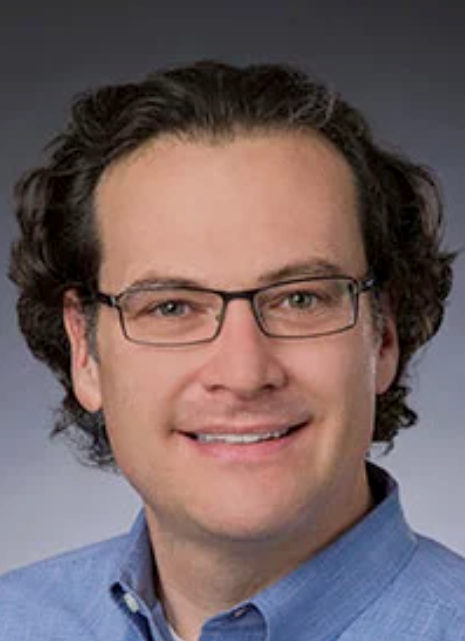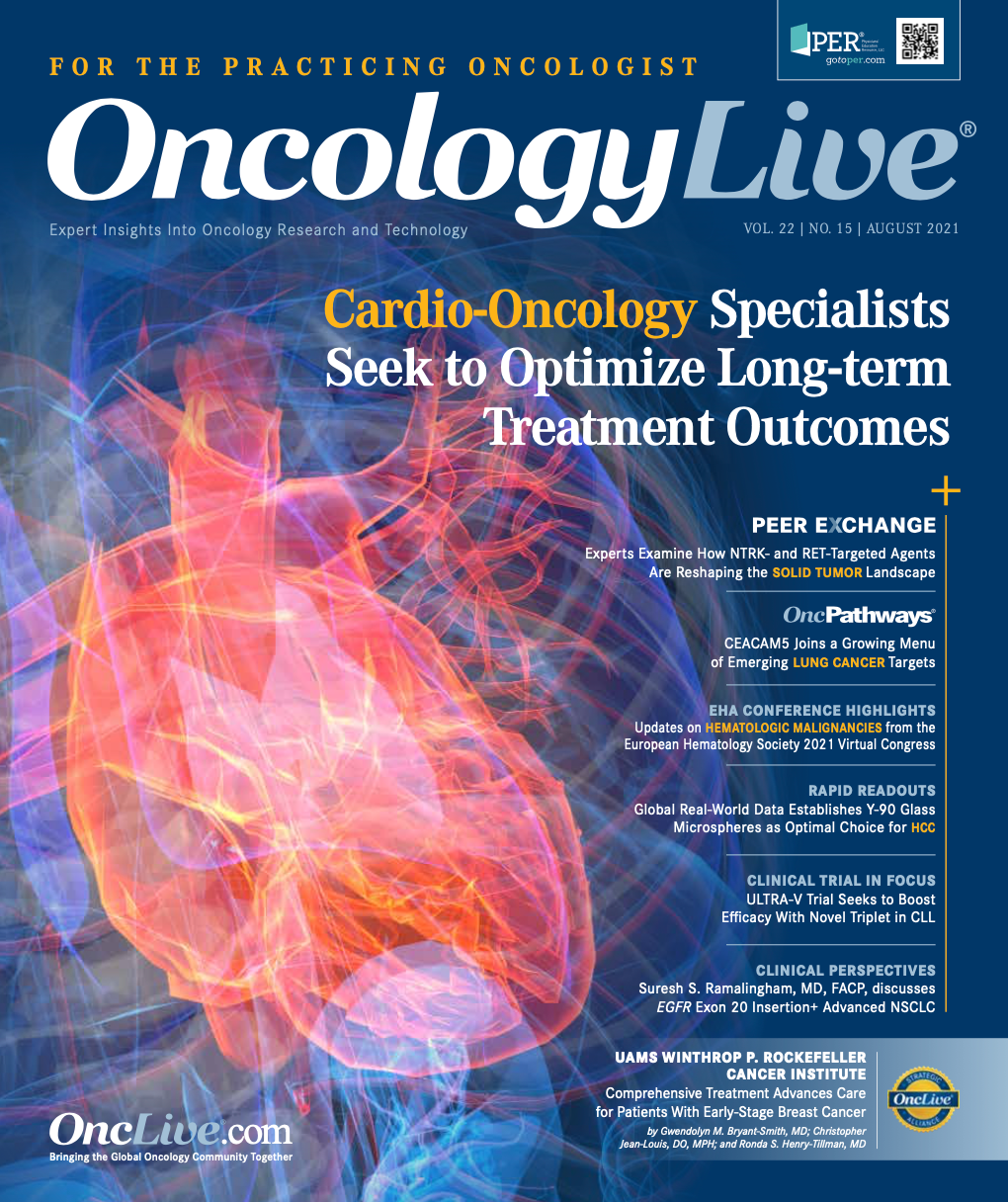Biosimilars Gain Traction, Generate Savings
The use of oncology biosimilars has expanded rapidly in the United States during the past 2 years as providers embraced a growing armamentarium of new products, according to findings from real-world data reported at the 2021 American Society of Clinical Oncology Annual Meeting.
Lalan S. Wilfong, MD

The use of oncology biosimilars has expanded rapidly in the United States during the past 2 years as providers embraced a growing armamentarium of new products, according to findings from real-world data reported at the 2021 American Society of Clinical Oncology Annual Meeting (ASCO 2021). Results of several analyses also show that biosimilars are starting to make an impact on the cost of providing care.
Overall, 11 biosimilars have been launched in the oncology market since January 2019, bringing the total number of FDA-approved biosimilars for cancer care to 14. Investigators who sought to measure oncologists’ response to the new crop of agents reported initial hesitation, followed by robust uptake and hefty savings. They noted that the biosimilar competition had little effect on reference product prices, which “remained stable.”1
The findings were reported in an abstract published at ASCO 2021. Investigators drew their data from 2020 prescription information published by Wolters Kluwer for 2020 (n = 130,836), sales data from IQVIA, and dosage information published by ION Solutions (n = 69,884). The analysis included information for patients taking bevacizumab (Avastin), trastuzumab (Herceptin), or Rituxan (rituximab) or an FDA-approved biosimilar for these drugs.
Investigators found that in 2020, 8.2% of new prescriptions for bevacizumab, rituximab, and trastuzumab were for biosimilar versions. For bevacizumab, there are currently 2 biosimilars available; for rituximab, there are 3, and for trastuzumab, 5.
Findings for use of trastuzumab biosimilars revealed a dramatic increase from the first year of availability to the next. In the first 3 months of 2019, 7.3% of patients initiating first-line treatment were prescribed the trastuzumab biosimilar vs the reference product. In the first quarter of 2020, when all 5 trastuzumab biosimilars had become available, the new prescriptions rate was 80.5% for patients receiving first-line care.
Uptake rates differed for individual biosimilars. The investigators reported that rituximab-pvvr (Ruxience), which was approved in July 2019, had an initial uptake of just 2.3%. At the same time, they did observe willingness among oncologists to switch patients from reference products to biosimilars as time went on. They noted that 11.1% of patients (bevacizumab, 11.3%; trastuzumab, 14.1%; rituximab, 7.9%) were transitioned from the reference biologics to biosimilars during treatment.
“Uptake was particularly rapid for trastuzumab biosimilars,” investigators said. “Among patients on trastuzumab at the time of its first biosimilar launch, 18.2% switched to trastuzumab-anns [Kanjinti] in the first 90 days postlaunch.”
Significant savings were a feature of the use of biosimilars in the oncology practices, the authors said. Costs per biosimilar prescription were lower than that of the reference by 42.0%, 29.9%, and 89.5% for trastuzumab, rituximab, and bevacizumab, respectively.
“However, biosimilar launches had little impact on reference product pricing, with 2019 to 2020 year-over-year...differences in price per prescription close to the year-over-year averages in previous years (2015-2019) for all 3 reference products,” the authors wrote.
Automatic Substitution Yields Savings
At Texas Oncology, a network with more than 250 locations throughout Texas and southeastern Oklahoma, the care team sought to increase the use of biosimilars in community practices by streamlining the process of substituting biosimilars for the reference products.
A program that enabled automatic prescribing of biosimilars resulted in dramatic savings and increased usage rates for biosimilar vs originator products, investigators reported at ASCO 2021.2 Although biosimilars offer the potential for therapeutically equivalent outcomes to branded drugs at a lower cost, they can be difficult to prescribe, Lalan S. Wilfong, MD, said in presenting the findings. Wilfong is vice president of quality programs and value- based care at Texas Oncology.
“Therapeutic interchange is complicated by the awkward designation of biosimilars, which limits simple substitution,” Wilfong said. “Generic drugs can be substituted by a pharmacist without any approval at all because they’re designated generics. However, the way biosimilars are designated requires that a physician approve a therapeutic interchange of a drug because it is not considered generic substitution. It is a biosimilar. So it requires a physician approval as well as patient reconsent for the therapy interchange of biosimilars to occur.”
In the Texas Oncology program, a central pharmacy team reviewed all prescriptions and substituted biosimilars for originator biologics unless payers insisted otherwise or the relevant biosimilar was not in the practice formulary. Texas Oncology also compiled a weekly report identifying all patients who would benefit from switching to biosimilars, and substitutions were then made. In collaboration with McKesson Specialty Health, patient and clinician education was incorporated into the biosimilar usage effort to improve results.
Texas Oncology began the substitution in July 2020 with rituximab and followed
up in September 2020 and October 2020 with bevacizumab and trastuzumab substitutions, respectively. By December 2020, utilization of biosimilars rose to 80% from 5% for rituximab, to 88% from 9% for bevacizumab, and to 74% from 8% for trastuzumab.
Investigators calculated the potential savings per administration at $550 for bevacizumab, $850 for trastuzumab, and $1400 for rituximab.
“In 1 month alone, this project dramatically reduced cost by $4 million or 21% by conversion to these 3 biosimilars,” they wrote. The investigators also predicted that additional savings would be possible by using multidose vials of biosimilar product rather than single-dose vials.
“Biosimilar conversion can be rapidly accomplished via physician-approved, pharmacist-driven care-team approach,” Wilfong said. “And it does require the entire care team to be involved because of the difficulty in simply just converting patients to biosimilars—the drugs have to be substituted, physician approved, and patient reconsented.”
Model Forecasts Savings
To assess the potential cost savings that could be realized through the use of biosimilars, academic and industry investigators developed a model designed to measure the impact on the US health care system of substituting rituximab-abbs (Truxima) for the combination of rituximab/hyaluronidase human (Rituxan Hycela). Rituximab-abbs, which is administered intravenously, became the first FDA-approved rituximab biosimilar in November 2018. The FDA approved subcutaneous rituximab/hyaluronidase (SC-R) in June 2017.
The model demonstrated savings of $2359 to $8186 per patient with non-Hodgkin lymphoma (NHL) or chronic lymphocytic leukemia (CLL), according to data reported at ASCO 2021.3
Investigators based their savings analysis on a 5-million-member insured population (Medicare), in which 972 patients would be treated for NHL or CLL during a 1-year span. Of those patients, 49 would receive SC-R. For purposes of the study, investigators assumed that 25% of the 49 patients (n = 13) would receive intravenous biosimilar treatment (IV-R-BIOSIM).
The 1-year model factored in drug and administration costs and assumed efficacy and safety would be equivalent between the 2 cohorts. For the IV-R-BIOSIM dosing, the investigators assumed body surface area of 1.8 m2. They also assumed annual dose counts with either IV-R-BIOSIM or SC-R of 10 for patients with untreated follicular lymphoma (FL) with maintenance therapy; 8 for untreated FL without maintenance, relapsed/refractory FL, or untreated diffuse large B-cell lymphoma (DLBCL); and 6 for CLL. Duration of IV-R-BIOSIM infusion was assumed to be 3 hours. SC-R costs included an initial intravenous rituximab dose.
For the 13 patients who received the hypo- thetical IV-R-BIOSIM dosing, estimated total 1-year savings were $57,864. The investi- gators said their budget impact model was most sensitive to low or high body surface area dosing and the proportion of patients with CLL. On a per-patient basis, the annual incremental savings with IV-R-BIOSIM was projected at $8186 for untreated FL with maintenance; $6664 for untreated FL with- out maintenance, relapsed/refractory FL, or untreated DLBCL; $2359 for CLL; and $5126 for NHL with 2-year maintenance.
“These findings demonstrate the potential economic benefits of IV-R-BIOSIM vs SC-R that may result in expanded access to ritux- imab therapy,” investigators said.
References
- McGlynn KA, McGarry J, Patel KB, Clinton N. Real-world trends in biosimilar prescribing among oncology providers, 2019- 2021. J Clin Oncol. 2021:39(suppl 15):e18701. doi:10.1200/ JCO.2021.39.15_suppl.e18701
- Wilfong LS, Dave N, Garey JS, et al. A successful model of bio- similar adoption in a community oncology practice. J Clin Oncol. 2021:39(suppl 15):6514. doi:10.1200/JCO.2021.39.15_sup- pl.6514
- James E, Trautman H, McBride A, Choudhry A, Thompson S. US budget impact analysis of an intravenous rituximab biosimilar versus subcutaneous rituximab for the treatment of non-Hod- gkin lymphoma (NHL) and chronic lymphocytic leukemia (CLL). J Clin Oncol. 2021:39(suppl 15):e18821. doi:10.1200/JCO.2021.39.15_suppl.e18821




